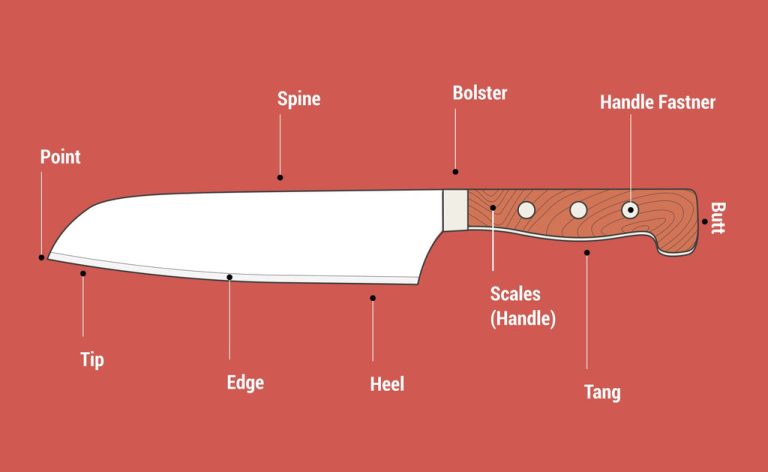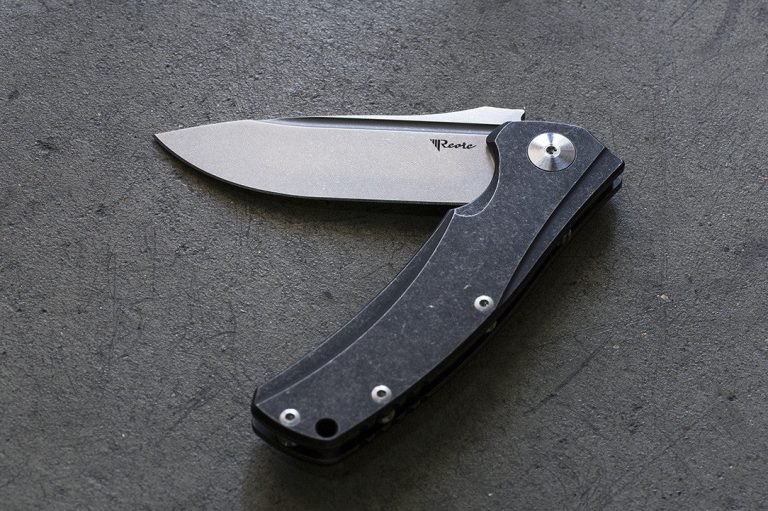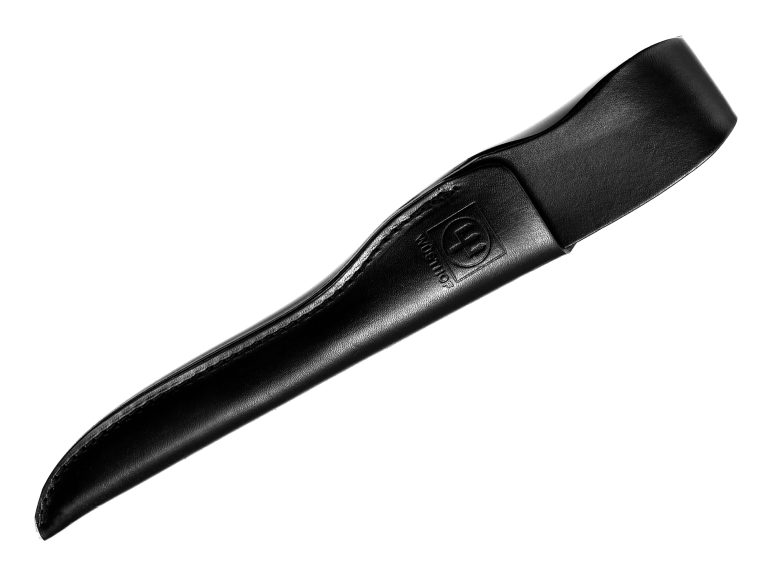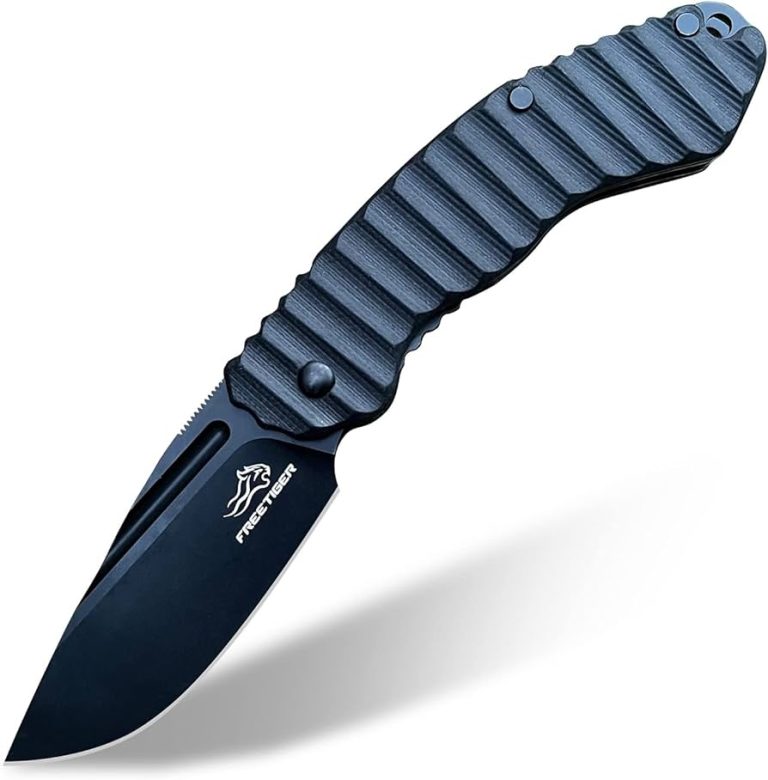Exploring the Different Types of Doctors Knives in Surgery
Different types of doctors’ knives in surgery include scalpel, bistoury, and guillotine. In surgery, doctors use various types of knives, including the scalpel, bistoury, and guillotine.
Each knife has its own unique purpose and is chosen based on the specific surgical procedure being performed. The scalpel is a versatile knife used for making precise incisions, while the bistoury is a larger knife used for deeper cuts or tissue removal.
The guillotine knife is primarily used in amputations or limb resections. Understanding the different types of knives used by doctors in surgery is essential for effective medical care and patient safety.
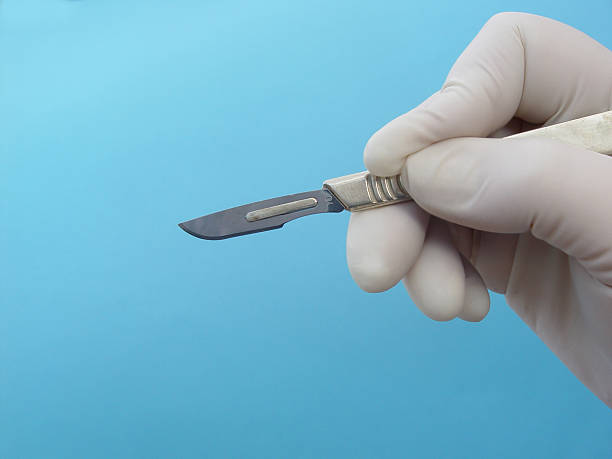
The Role Of Knives In Surgical Procedures
Doctors rely on a range of specialized knives during surgical procedures, each serving a unique purpose. Understanding the different types of doctors knives used in surgery is essential for ensuring successful procedures and patient safety.
Precision and accuracy are crucial in surgical procedures, where each incision and tissue dissection can have a significant impact on patient outcomes. The tools used in surgeries vary widely, each serving a specific purpose to aid in the delicate process.
Among these tools, knives hold a vital role in ensuring successful procedures. Let’s delve into the importance of precision and accuracy, the various surgical tools, and how knives aid in incisions and tissue dissection.
Importance Of Precision And Accuracy During Surgery
- Surgeons must demonstrate exceptional precision and accuracy during surgical procedures to minimize risks and achieve optimal outcomes.
- Precision allows surgeons to target specific areas and structures with utmost accuracy, preventing unnecessary damage to surrounding tissues.
- Accurate surgical techniques not only contribute to successful procedures but also reduce the risk of complications and post-operative complications.
Overview Of The Various Tools Used In Surgeries
A wide array of tools is employed in surgical procedures, each designed for a specific purpose. These tools include but are not limited to:
- Scalpels: Used for making precise incisions, scalpels are available in various shapes and sizes to accommodate specific surgical needs.
- Surgical scissors: Used for cutting tissues and sutures, surgical scissors come in different variations, such as straight, curved, or serrated blades, ensuring suitability for various procedures.
- Bistouries: Similar to scalpels, bistouries are razor-sharp knives that aid in making incisions during surgeries.
- Electrocautery knives: These knives come with an electrically heated blade that cauterizes tissues as it cuts, minimizing bleeding during the procedure.
Introducing The Significance Of Knives In Surgical Procedures
Knives play a pivotal role in surgical procedures, actively contributing to the success of the operation by:
- Assisting in making precise incisions: Knives enable surgeons to create accurate incisions in the desired locations, allowing access to the targeted area.
- Enabling tissue dissection: By using knives, surgeons can carefully separate and dissect tissues, ensuring a clear view of the surgical site and facilitating the removal or repair of affected areas.
How Knives Aid In Incisions And Tissue Dissection
Knives aid in surgical procedures by:
- Making precise incisions: Surgeons rely on knives to create clean, controlled incisions, allowing for access to the underlying tissues without causing unnecessary damage to surrounding structures.
- Providing optimal control: Knives are designed to provide surgeons with excellent control and maneuverability, enabling them to navigate through delicate tissues with precision and accuracy.
- Facilitating tissue dissection: Knives are vital in carefully dissecting tissues, separating them layer by layer to reveal and address specific structures or abnormalities.
Knives hold significant importance in surgical procedures. They assist surgeons in making precise incisions and ensuring accurate tissue dissection, ultimately contributing to successful outcomes and minimizing post-operative complications. Precision and accuracy are key when it comes to performing surgeries, and the appropriate use of knives plays an essential role in achieving these objectives.
Common Types Of Knives Used By Surgeons
Surgeons rely on various specialized knives in surgery, including the scalpel, dissecting knife, and surgical knife, each designed for specific medical procedures and precision. Understanding the different types of knives used by surgeons is crucial for providing optimal patient care.
Scalpels: The Versatile Precision Tools
Scalpels are indispensable tools in the field of surgery, known for their precise and controlled incisions. Surgeons rely on different types of scalpels to suit specific surgical requirements. Let’s explore the common types used by doctors:
- Disposable scalpels for single-use surgeries:
- These scalpels come with pre-attached blades that are safely disposed of after a single procedure.
- Being sterile and sharp, they minimize the risk of infection and ensure optimal cutting performance.
- Reusable scalpels for multiple procedures:
- Unlike disposable scalpels, reusable ones are crafted with detachable blades that can be sterilized and used again.
- The advantage is cost-effectiveness, especially for surgeries that require multiple incisions.
- Specialized scalpels for specific surgeries:
- Surgeons often require specialized scalpels designed for specific procedures. For instance:
- Micro-scalpels with ultra-thin blades for delicate surgeries like neurosurgery or ophthalmic procedures.
- Stitch-cutting scalpels with blunt tips to safely remove sutures and prevent injury.
Lancets: The Fine-Pointed Instruments
Lancets, with their fine-pointed and sharp edges, serve various purposes in medical settings. Let’s take a closer look at their applications:
- Utilizing lancets for puncturing skin and small incisions:
- Lancets are frequently used for creating small punctures or incisions in the skin to obtain blood samples, as in glucose testing or blood gas analysis.
- They ensure minimal patient discomfort while providing the necessary amounts of blood required for accurate test results.
- Different lancet designs for varying medical procedures:
- Depending on the purpose and procedure, lancets come in different designs, including:
- Push-button lancets that automatically release with a click, providing consistent depth and reducing human error.
- Twist-top lancets for adjustable puncture depth, ideal for various skin types and testing requirements.
- The role of lancets in blood glucose testing and minor surgeries:
- Besides blood sampling for glucose testing, lancets can also be used in minor surgical procedures, such as removing small skin tags, ingrown toenails, or performing biopsies.
- The precision of lancets helps minimize tissue trauma and promote faster healing.
Electric Knives: The Modern Innovation
In recent years, electric knives have emerged as reliable surgical tools due to their advanced features and benefits. Let’s delve into their advantages:
- Understanding the advantages of electric knives in surgery:
- Electric knives, often referred to as electrocautery knives or surgical diathermy, combine cutting and cauterizing functions in a single device.
- They offer precise control, reducing the risk of excessive bleeding and tissue damage during surgical procedures.
- How electric knives improve precision and reduce bleeding:
- Electric knives use high-frequency electrical currents to cut through tissue, simultaneously sealing blood vessels to prevent bleeding.
- This cauterization function ensures minimal blood loss, resulting in clearer visibility for surgeons and improved patient outcomes.
- Exploring common types of electric knives used by doctors:
- Monopolar electric knives, with a single active electrode, are ideal for general surgeries and coagulation purposes.
- Bipolar electric knives, having two active electrodes, are predominantly used in delicate procedures, such as neurosurgery or eye surgeries.
By understanding the variety of scalpels, lancets, and electric knives available, surgeons can select the most appropriate tools for each surgical procedure. These precision instruments contribute to the success of surgeries while prioritizing patient safety and optimal clinical outcomes.
Specialized Knives For Specific Surgical Fields
Discover a range of specialized knives designed for different surgical fields, essential tools for doctors in surgeries. From precision scalpels to bone saws, explore the various types of doctors’ knives that ensure effectiveness and precision in medical procedures.
Orthopedic Knives: Precision In Bone Surgeries
Orthopedic surgeries often require the use of specialized knives designed specifically for bone cutting. These precision instruments are crucial in ensuring accurate and safe procedures. Here are the different types of orthopedic knives used in bone surgeries:
- Bone Chisels: These knives have a sharp, beveled edge that allows surgeons to cut or shape bone during procedures such as joint reconstructions or bone grafting.
- Osteotomes: Osteotomes are used to cut through bone during procedures like osteotomy or fracture repair. They come in various sizes and shapes to accommodate different surgical needs.
- Rasps: Rasps have a roughened surface and are used to smooth and shape bone, making them useful in surgeries like joint replacements or spine surgeries.
- Saws: Surgical saws are commonly employed in orthopedic surgeries to perform bone cuttings. They can be manual or powered, depending on the procedure’s requirements.
Specialized Knives For Joint Replacement Procedures
Orthopedic surgeons rely on specialized knives specifically designed for joint replacement procedures. These knives ensure precision and minimize the risk of complications. Here are some examples:
- Cement Removal Knives: Used to remove old cement during joint revision surgeries, these knives have a modified blade shape to facilitate cement removal without damaging surrounding structures.
- Femoral Cutting Guides: These knives assist in creating precise cuts on the femur to accommodate artificial joint components.
- Tibial Cutting Guides: Similar to femoral cutting guides, tibial cutting guides aid in achieving accurate cuts on the tibia during knee replacement surgeries.
- Patella Cutting Guides: Designed for patellar resurfacing, these knives provide guidance for proper bone resection, ensuring a precise fit of the artificial patella component.
Ophthalmic Knives: Delicacy In Eye Surgeries
Ophthalmic surgeries demand utmost delicacy and precision due to the fragility of the eye. Ophthalmic knives play a vital role in these intricate procedures, involving various types of surgical techniques. Here’s an insight into ophthalmic knives used in eye surgeries:
- Microkeratome Blades: Used in LASIK procedures, these knives create a thin corneal flap, allowing the surgeon to reshape the underlying tissue with a laser.
- Slit Knives: Slit knives are fine, tapered instruments used to make precise incisions in the cornea during procedures like corneal transplantation or cataract surgery.
- MVR Blades: MVR (MicroVitreoretinal) blades are employed in vitreoretinal procedures to create small incisions for accessing the inner eye structures.
- Crescent Knives: Crescent knives are used in procedures such as cataract surgery to create an incision in the lens capsule, facilitating its removal.
Precision And Safety Considerations In Ophthalmic Knife Usage
When using ophthalmic knives, precision and safety are of utmost importance due to the sensitivity of the eye. Here are some key considerations:
- Blade Sharpness: Ophthalmic knives must maintain sharpness to ensure accurate incisions without causing unnecessary trauma to the delicate eye tissues.
- Sterility: Ophthalmic knives should be sterile to minimize the risk of infection. Single-use knives are preferred to avoid any potential cross-contamination.
- Proper Technique: Surgeons should employ proper technique and have a steady hand to ensure precise and controlled movements while using ophthalmic knives.
Neurosurgical Knives: Precision In Brain And Nervous System Surgeries
Neurosurgical procedures involving the brain and nervous system necessitate the use of highly specialized knives. These instruments need to be precise and delicate to ensure the utmost accuracy during intricate surgeries. Let’s delve into the importance of specialized knives in neurosurgical procedures:
- Micro Dissectors: These knives are designed to delicately separate tissues and are commonly used in microsurgical procedures involving the brain and nerves.
- Curettes: Curettes are used to scoop and remove abnormal tissue, such as tumors or blood clots, during neurosurgical interventions.
- Blunt Dissectors: Blunt dissectors are used to gently separate tissue layers, ensuring minimal trauma to the surrounding structures.
- Micro Scissors: Micro scissors are fine and delicate instruments used to perform precise cutting in neurosurgical procedures.
Precision And Safety Measures In Neurosurgical Knife Selection
Neurosurgical knife selection involves careful consideration of precision and safety. Here are a few measures taken to ensure optimal outcomes:
- Specialized Blade Shapes: Neurosurgical knives come in various specialized blade shapes to suit the intricacies of different procedures, allowing for precise and controlled incisions.
- Ergonomic Handles: Ergonomically designed handles provide surgeons with better control and reduce the risk of hand fatigue during long and detailed surgeries.
- Sterility and Single-Use: Neurosurgical knives are typically sterile and often designed for single-use to minimize the risk of infection and maintain optimal sharpness.
- Microscopic Visualization: Surgeons often rely on microscopic visualization to ensure precision when using neurosurgical knives, enabling them to make accurate incisions and manipulations.
Remember, the selection of specialized knives for specific surgical fields is crucial to ensure optimal outcomes, precision, and safety during procedures.
Innovations And Advancements In Surgical Knives
Explore the remarkable innovations and advancements in surgical knives, focusing on the various types of doctors’ knives used in surgery. Discover how these cutting-edge tools are revolutionizing the field and enhancing patient outcomes.
Laser Scalpels: Cutting-Edge Technology Revolutionizing Surgeries
Laser scalpels have ushered in a new era in surgical precision and efficiency. These state-of-the-art tools utilize focused beams of light to make incisions, offering numerous advantages and applications in various surgical procedures. From their ability to minimize bleeding and tissue damage to their precision in delicate areas, laser scalpels have become invaluable in modern medicine.
However, like any technology, laser scalpels also have certain limitations and considerations that need to be taken into account.
- Understanding the principles of laser scalpel technology:
- Laser scalpels use a high-energy light beam to generate heat and precisely cut through tissues.
- The laser beam creates a concentrated and narrow line of incision, reducing collateral damage to surrounding tissues.
- Different laser types, such as CO2 lasers or erbium-doped yttrium aluminum garnet lasers (Er: YAG), provide variable tissue interactions and depths of penetration.
- Advantages and applications of laser scalpels in surgery:
- Minimizes bleeding, as the laser beam cauterizes blood vessels during the incision.
- Allows for greater precision and control, particularly in delicate and hard-to-reach areas.
- Reduces damage to surrounding tissues, leading to faster healing and less scarring.
- Widely used in ophthalmology, dermatology, and ENT surgeries, among others.
- Limitations and considerations in laser scalpel usage:
- Cannot be used on highly reflective surfaces, such as metal.
- Limited effectiveness against certain types of tissues, such as those with high water content.
- Requires specialized training and expertise to safely operate.
- High initial investment cost may limit availability in some healthcare facilities.
Robotic-Assisted Surgical Knives: The Future Of Precision Surgery
In recent years, robotic-assisted surgical knives have emerged as a groundbreaking advancement, revolutionizing the field of surgery. These robotic systems work in conjunction with skilled surgeons to enhance precision, control, and outcomes during complex procedures. By combining the surgeon’s expertise with the robotic precision, they offer numerous benefits and have the potential for further advancements in the future.
- Introduction to robotic-assisted surgery and knife technology:
- Robotic-assisted surgical systems, equipped with advanced knife technology, provide surgeons with enhanced vision, dexterity, and control.
- Surgeons control the robotic arms using a console, manipulating the surgical knives with utmost precision.
- Allows for minimally invasive procedures, resulting in smaller incisions, reduced scarring, and faster recovery times.
- How robotic-assisted surgical knives enhance precision and control:
- The robotic arms offer a greater range of motion and stability, enabling precise movements even in confined spaces.
- Surgical knives attached to the robotic arms can be manipulated with exceptional accuracy, minimizing the risk of human error.
- Magnified 3D visualization enhances the surgeon’s view, providing improved depth perception and precision during intricate procedures.
- Benefits and potential advancements in robotic knife technology:
- Increased surgical accuracy reduces the risk of complications and improves patient outcomes.
- Potential for remote surgery, enabling surgeons to perform procedures on patients located far away.
- Integration of artificial intelligence (AI) algorithms may enhance surgical decision-making and optimize surgical techniques.
These innovations and advancements in surgical knives, particularly laser scalpels and robotic-assisted systems, have opened up new possibilities in the field of surgery. By combining precision, control, and cutting-edge technology, doctors can provide patients with safer and more effective treatment options.
As technology continues to evolve, the future of surgical knives holds exciting prospects for further advancements, pushing the boundaries of what is possible in the operating room.
Frequently Asked Questions
What Is The Knife Used By Doctors During Surgery?
The knife used by doctors during surgery is called a surgical knife or scalpel.
What Are The Different Types Of Surgery Blades?
Surgery blades come in various types including scalpel blades, stitch-cutting blades, and biopsy blades.
How Do You Identify Surgical Instruments?
To identify surgical instruments, examine their unique features and markings for specific purposes.
What Are 4 Surgical Instruments?
Four common surgical instruments include forceps, scalpels, retractors, and scissors used by surgeons during operations.
Conclusion
Summing up, the different types of doctor’s knives used in surgery vary in terms of their design, functionality, and purpose. Each knife serves a specific role and plays a vital part in ensuring the success and safety of surgical procedures.
For precision and delicacy, the fine-tip knife is ideal, allowing surgeons to perform intricate incisions with utmost control. On the other hand, the robust and durable utility knife proves essential in tougher surgical tasks where strength and durability are of utmost importance.
Furthermore, the safety knives are designed specifically to minimize the risk of accidental injuries, protecting both the patient and the surgeon during the operation. These knives have mechanisms that retract or cover the blades when not in use, reducing the chances of mishaps.
By understanding the various knives available, surgeons can select the most appropriate tool for the specific surgical procedure, ensuring optimal results. Regardless of the type, it is crucial for surgeons to handle these knives with care, considering their sharpness and potential risks.
To enhance surgical outcomes, it is important for healthcare professionals to stay up-to-date with advancements in surgical technologies and regularly assess their knowledge and skills in handling different types of doctor’s knives. This will ultimately contribute to safer surgeries, better patient outcomes, and improved overall healthcare standards.
So, as advancements continue to reshape the field of surgery, the diversity and effectiveness of doctor’s knives will undoubtedly play a crucial role.

